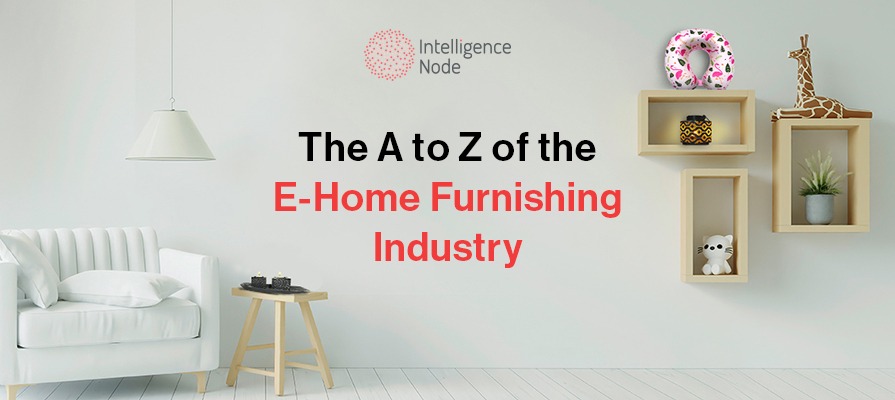Online shopping for home decor in the post-pandemic world
The turn of the decade brought with it a whirlwind of change– beginning with the fundamentals. ‘Work from home’ policies and nationwide lockdowns altered consumer preferences, behavior, and priorities, and the subsequent changes in buying patterns, spending, and needs reshaped the retail landscape across most industries. Among these, was the home decor industry.
Today, organizations have adopted hybrid models and work from home has become rampant, if not the norm. But the lasting effects of the pandemic continue to dictate trends in 2022. Reports claim that 52.9% of transactions in the first half of this year took place via mobile, and 46% conducted research and comparisons on their phones as part of their shopping experience. This evolution has been widely considered “a critical tipping point for home décor brands and retailers as it represents a shift in consumer behavior that will need to be mirrored in the overall approach to customer experience.
Home Furnishing Setting the Scene for “WFH”
In early 2020, as consumers were pushed to invest in home office setups and new workstations within their living spaces, a great deal of focus was brought not only to affordable, DIY, modular home offices, but thanks to the millennial mindset of maintaining a good work-life balance, segmenting working areas from living areas. This meant an increased interest in home decor overall, as millennials are the biggest buyers of furniture online, leading the digital trend. Further, people spending more time within their homes meant budgets could be taken from typical recreational spending and rerouted to home renovations.
2020 statistics corroborate these insights as home furnishing sites saw record high spending and traffic, hitting 133 million unique visitors in the US in May 2020. Top retailers retained higher than typical visitation rates since then, and studies claimed online spending shot up to $12.1B in Q2 2020. Despite slight declines moving forward into Q3, spending remains significantly above pre-pandemic levels. Brands like Article even saw growth as high as 200% during this splurge period!
Digital Claiming ‘Space’ in Home Furnishing
Home furnishing after the thick of the pandemic became firmly associated with digital experiences. 1 in 5 customers watched video reviews of products before making their decision, 1 in 3 admitted to buying an item on sale that they otherwise would not have, and a whopping 75% confirmed that they did their own research online before pulling out their wallets.
These are all reasons for retailers big and small to keep their eye on competing brands not only for their product listings, but for the discounts, sales, and prices they offer. eCommerce’s share of homeware rose to 20% in that year and is projected to hit 23% by 2023. Digital catalogs and online marketplaces like Amazon briefly became a hub for enthusiasts looking for their next bargain, and even factors as seemingly minor as maintaining good customer support and review spaces on websites became a make or break feature influencing consumers to either stay or visit a competing brand’s website while purchasing.
Niche Interests Pave the Way for Massive Retail Trends
Furniture flipping turns the table on retailers
Late December 2020 showed an 88% increase in searches for “furniture flipping”, which proved to be a hot new trend the following year. Consumers turned to scanning yard sales and thrift stores for old, discarded furniture to be repaired, repainted, and remodeled into a unique new item. By 2021, a significant portion of consumers opted for this more sustainable option, widening the scope of home decor shopping away from the mass-produced and gaining popularity along the way.
DIY projects create a new market segment
Solo home projects went on to become all the rage on social media, inspiring thousands to affordably upcycle older, cheaper products into something new, unique, and green. Even retailers jumped on this bandwagon, and home improvement brands that catered to DIY enthusiasts grew 14% YoY. However, as offices reopen and the new normal loses its novelty, this trend may fade fast.
Popular media ‘inspires’ sales
Home, interior design, and gardening related media are now guides to ongoing trends, and more people lean into using this content as a tool in their decision making process. 23% of consumers considered purchases on this basis- and outdoor, garden area, and patio redecorating projects were inspired by this popular media. A massive range of channels contribute to the visibility of the home decor and furnishing industry, and identifying the correct channel for your niche could help streamline your reach to the right audience.
Blogs, reviews, YouTube channels, social media influencers, TV shows, magazines, and word of mouth all play a strong role in this sector, and audiences actively seek them out as part of the overall purchasing experience.
No Clear Winner in the US Home Decor Industry
According to a survey conducted by House Digest, 30% of respondents chose Amazon as their favorite home decor marketplace, surpassing all competitors in sheer ease of use, vastness of selections, and flexible pricing across different sellers. Walmart, Target, Wayfair, and Anthropologie are the next most popular home furnishing options online, though 82% of online shoppers pointed to Amazon as a retailer they purchased from in 2021. Walmart follows close behind at 66%, Target at 42%, and WayFair at 26%.
Massive numbers paired with massive name brands only outline the obvious: despite the fragmented competition, the titans of home furnishing dominate this space, and predictions for small and medium sized stores seem grim, as 35% to 50% of retailers are expected to be out of business in less than five years.
A massive portion of manufacturers and suppliers go hand in hand with regional giants, and the largest retailers can buy direct from Asia, causing consumers to experience some delays in shipments and stock in the past year. These megabrands rely strongly on their image as retailers to keep this segment strong, but do not yet distinctly identify as leading furniture-specific retailers, making the US home decor space ripe for the taking, with considerably lower barriers to entry and the absence of a major retail monopoly both signaling open arms for specialized DTC brands in home furnishing.
eCommerce in Decor Shaped by Consumer Trends
Website experiences in 2022 vary- brands like Amazon or IKEA are built for convenience and functionality alongside affordable pricing. They opt to divide sites by bundles such as furnishing options for bedrooms, living spaces, and workstations. This can take pressure off the shopping experience for the enthusiast looking for a specific aesthetic, and can help cut through the clutter of excessive options by helping the consumer visualize their final setups.
HomeGoods, on the other hand, brands itself as a furnishing store that’s about ‘finding’ your perfect piece. Here, selections are constantly changing, including name brand items at discounted prices, and its online and physical stores cater to an audience willing to explore sets of unique pieces for their perfect match.
Each brand has identified a segment of consumers for whom their product assortments are best suited, and curated experiences accordingly. Thus, investing well in UI/UX helps different audiences navigate their way to making a purchase on your website.
These key features help us further understand what drives a consumer to purchase in this space, what makes online shopping in this category most enjoyable, and how they narrow down their final selections among thousands of options.
A newly popular avenue is interior design publications and sites- for example, Elle Decor and Cheapism publish listicles of decor and furnishings featuring reviews and recommendations of hand picked items, following popular trends. These curated lists add to the appeal and convenience for online shoppers and usually contain links to the products themselves, making browser shopping an even more shareable, quick, and addictive experience.
Consumer Expectations Have Evolved: Retail Giants Follow Suit
Needless to say, furniture businesses delaying an evolution to digital are only pushing the inevitable, as online portals are a necessity, no longer an option. The question is how to build the most effective shopping experience. According to digitalcommerce360, digital storefronts have gained such notoriety that 93% of shoppers expect their online experience to be comparable, even superior to in-store experiences- a high bar for any player.
Even more noteworthy is that 2022 marks a milestone in home furnishing eCommerce: for the first time, home decor consumers made more transactions on their mobile devices than they did on a desktop. Desktops still mark a difference in conversion rate and time spent on site, however- and account for a higher average order. According to Syte, a home decor order via desktop averaged $220.20, while on mobile devices spending hovered at $166.10, a 32% disparity. This difference in preference of shopping experience is not dissimilar to the massive range of channels through which consumers are led to purchasing decisions- from TV to social media, this list continues to expand.
In terms of strategic marketing led by brands, however, email as a channel generated traffic that produced the highest average order value ($334.50) and spent the most amount of time on the site (just over 21 minutes). Google paid and organic searches (as well as direct) only amount to roughly 7 minutes spent on site, and even came second in highest average order value, at $233.30. Pinterest ($211.20), affiliates ($192.40), and others ($192.10) follow behind.
A study by Cylindo in June 2020 outlines 17 key website features considered most important in the category, as observed via ‘Furniture Today’s’ top 100 retailers’ websites- features that even top players are gradually universally adopting. These include product customization, HD zoom, 360 degree product views, review and rating sections, and augmented reality- IKEA scored high in this analysis, resting at 89 points on an index scale of 100, boasting most of these features.
Fitting these elements into your brand’s digital space helps relevant audiences effectively navigate through product assortments, find the right selections for them, and encourage satisfactory purchases and overall experiences. Paired with investments in suitable complementary media, such as magazine catalogs, social media, blogs, etc make for a surefire way to target your audience to the right products at all times.
Your Key to Unlocking Maximum Retail Profits
The US home furnishings market is yet to identify its top brand, and in 2022, it’s anyone’s game.
Intelligence Node is the one stop tool to help your team skip to the right insights, the right strategy, and the right pricing and product assortment data for your business. Real-time, actionable figures allow you to navigate complex markets, identify pricing strategies that enable you to maximize profits and jump on trends ahead of your competitors.
Book a demo today to explore the full potential of your business, backed by the right insights.





